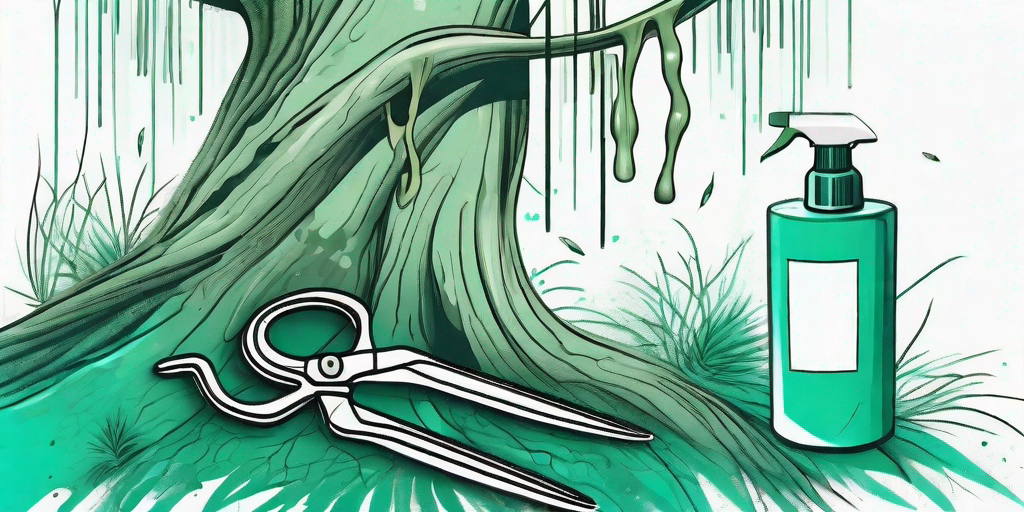
Spanish moss, despite its romantic and ethereal appearance, can be a real party pooper for your trees. This uninvited guest, often mistaken for a harmless decoration, can actually cause significant damage to your beloved green giants. But fear not, dear reader, for we have a plan of action that will send this pesky plant packing. Let's dive in, shall we?
Understanding the Enemy: What is Spanish Moss?
Before we wage war, it's important to know our enemy. Spanish moss, or Tillandsia usneoides, is an epiphytic bromeliad. Now, before you start thinking it's some sort of alien species, let me explain. An epiphyte is a plant that grows on another plant but doesn't steal nutrients from its host. Instead, it's like that freeloading friend who crashes on your couch but eats his own takeout.
Spanish moss thrives in humid environments and prefers hardwood trees like oak, cypress, and pine. It's not technically harmful to the tree, but when it gets out of control, it can block sunlight and reduce the tree's growth. Plus, let's be honest, it's just not a good look.
Identifying Spanish Moss
Spanish moss looks like long, thin, grey-green threads hanging from trees. It's often mistaken for a cousin, the beard lichen, but Spanish moss is more of a 'hang loose' kind of guy, draping itself over branches rather than clinging tightly.
It reproduces by wind-dispersed seeds, which means it can spread faster than gossip in a small town. If you spot it on one tree, chances are it's planning a takeover of your entire garden.
The Battle Plan: How to Get Rid of Spanish Moss
Step 1: Manual Removal
The first step in our Spanish moss eviction plan is manual removal. This is best done in the winter when the tree is dormant. You'll need a long pole with a hook on the end to reach the higher branches. Remember, safety first! Wear gloves and eye protection, and watch out for falling moss.
Be gentle with your tree. You don't want to damage the bark or break branches. If the moss is stubborn, don't force it. We have other tactics in our arsenal.
Step 2: Biological Control
If manual removal feels like a game of whack-a-mole, it might be time to call in the troops. Certain birds, like the Northern Parula and the Baltimore Oriole, love to feast on Spanish moss. Encouraging these birds to visit your garden can help control the moss population.
However, this method requires patience and a love for birdwatching. If you're more of an 'instant results' kind of person, you might prefer our next step.
Step 3: Chemical Control
For those stubborn cases, a chemical treatment might be necessary. Copper-based sprays can be effective, but they should be used with caution. Always follow the manufacturer's instructions and avoid spraying on windy days to prevent damage to other plants.
Remember, this is a last resort. We're not trying to wage chemical warfare on our gardens, just evict an unwelcome guest.
Preventing Future Infestations
Once you've got rid of the Spanish moss, you'll want to prevent it from making a comeback. Regularly inspect your trees for new growths, especially after windy weather. Keep your trees healthy and well-pruned, as Spanish moss prefers weak, stressed trees.
Consider planting tree species that are less attractive to Spanish moss, like maple, dogwood, or citrus. It's like choosing a less comfortable couch to discourage your freeloading friend from overstaying his welcome.
Frequently Asked Questions
Is Spanish moss harmful to trees?
Spanish moss is not directly harmful to trees, but it can block sunlight and reduce the tree's growth. It can also add weight to branches, potentially causing them to break.
Can Spanish moss kill a tree?
While Spanish moss is not a parasite and doesn't steal nutrients from the tree, a heavy infestation can stress a tree and make it more susceptible to disease and pests.
How does Spanish moss spread?
Spanish moss spreads by wind-dispersed seeds. It can also spread when pieces of the plant break off and land on another tree.
Conclusion
Spanish moss might look charming, but it's not a guest you want hanging around your trees for too long. With our step-by-step guide, you can say 'adios' to this pesky plant and keep your trees happy and healthy. Remember, the key is regular inspection and prompt action. Now, go forth and reclaim your garden!















